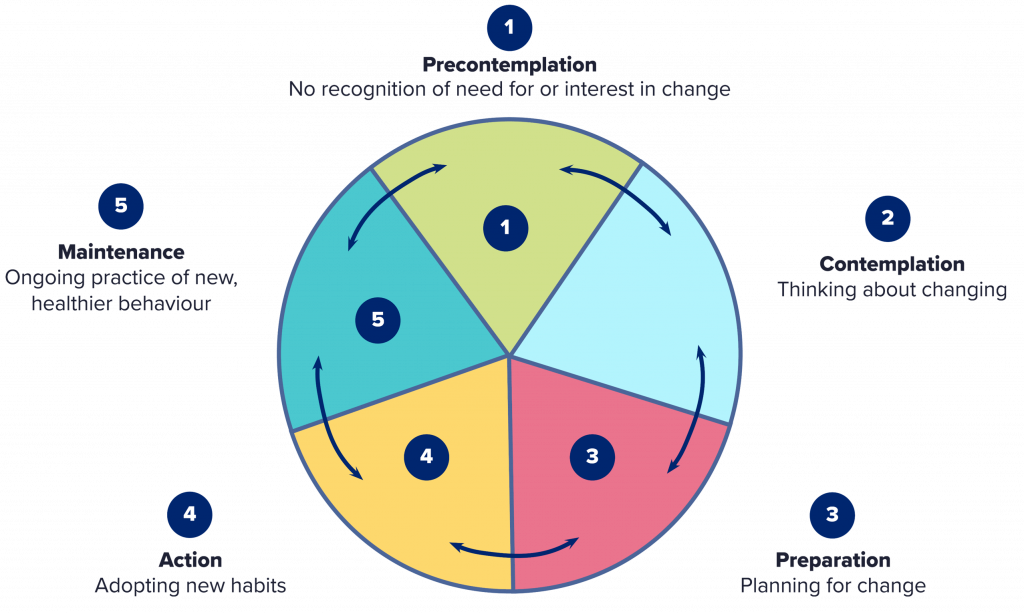
NCSCT Standard Treatment Programme
10 Lessons
- Level 2 Stop Smoking Advisor Training
- NCSCT Standard Treatment Programme
- Behaviour change
NCSCT Standard Treatment Programme
Last activity on July 6, 2025
Behaviour change
Transtheoretical (stages of change) model
The first behaviour change model we will go through is the Transtheoretical model, otherwise known as stages of change model. This model proposes that we move through 5 stages when carrying out behaviour change of any kind, whether that be weight loss, sleep or smoking cessation. We will now take a look at these stages in more detail.
Listen Here

First stage
The first stage in the wheel is pre-contemplation, otherwise known as the ‘not thinking about it’ stage, whereby someone may not be interested in change, or unaware of the problem. The best we can do for people at this stage is raise awareness and show them benefits of change. Some may respond well and move through the stages, others will not. We may have to be content with planting the seeds of change and being non-judgemental so that when they are ready, they will come back to us for support.
Second stage
The second stage, contemplation, known as the ‘thinking about it’ stage, is where someone may understand that there is a benefit to change, but isn’t doing anything about it right now. At this stage, some may respond well to motivational interviewing techniques as we cant to resolve their mixed feelings and make a commitment to change.
Third stage
The third stage is preparation, involving research about how to change, making a practical plan and getting psychologically ready. Clients may need support in ensuring plans are realistic and achievable, and could benefit from having a plan ‘b’ in case change is more difficult than anticipated.
Fourth stage
The fourth stage is action, when the client is actively changing their behaviours. They may need support in changing habits and problem solving, as well as remembering why they want to change as this stage can be tiring.
Fifth stage
The fifth and final stage to the model is maintenance, referring to behaviour maintenance and in this case, remaining smokefree. Old habits are broken and new ones become more automatic, but clients may need support in maintaining motivation at this point. They may also benefit from setting new goals that are focused on general wellbeing, for example a goal around increasing daily steps due to concerns around weight gain since quitting.
A client may relapse and fall into old behaviour patterns, so returning to smoking. Clients can jump straight back into action after a relapse, but it may be beneficial to reflect on why new behaviours were not sustainable and re-asses coping strategies.
The transtheoretical model can provide useful tools and framework when working with some clients, however over recent years, it has been found to have a number of flaws and limitations when looking at smoking cessation in practice. The suggestion that an individual needs to go through pre-contemplation, contemplation and preparation before taking action is not always seen to be the case. For example, research shows us that around half of all quit attempts in GP settings are spontaneous, so no planning or preparation at all, just straight into action- sometimes due to a sudden health trigger. This has led to the Prime and COM-B model, recently found to be more appropriate for smoking cessation.